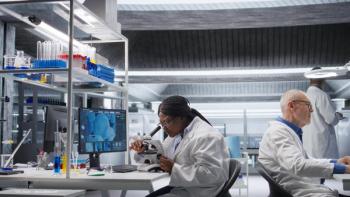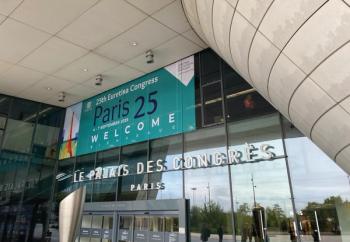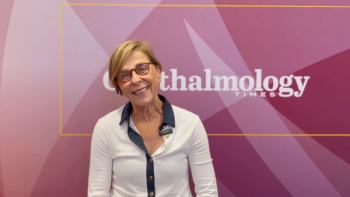
New treatment for wet AMD
Evaluation of a new value-based treatment approach for wet AMD.
We evaluated a Phase II study which was designed to assess the effectiveness of intraocular brachytherapy in conjunction with VEGF inhibitor therapy as a treatment for subfoveal choroidal neovascularization. One treatment naive eye of each participant with subfoveal choroidal neovascularization was treated and 34 consecutive participants completed treatment with follow-up of at least 12 months.
Radiation therapy was administered using the Epiretinal Brachytherapy System (NeoVista, Fremont, CA), an intravitreal applicator containing a Strontium/Yttrium 90 (90Sr /90Yr) β-emitting isotope, referred to from hereon as 90Sr brachytherapy. The 90Sr applicator was inserted through a pars plana incision and, after vitrectomy, was held for 3 to 5 minutes over the neovascular AMD lesion until a dose of 24Gy was delivered to the lesion base.
The 90Sr brachytherapy was given in conjunction with two 1.25mg intravitreal injections of bevacizumab. The first intravitreal injection was given within 1 week before the 90Sr administration to the time of 90Sr administration, and a second injection was routinely given 1 month later.
Evaluating cost-effectiveness
Cost-effectiveness is defined by what a society is willing to pay for a particular healthcare service. It is typically measured using a cost-utility ratio, or money expended per QALY (quality-adjusted life-year) gained. The World Health Organization suggests that interventions costing less than approximately 1 x per capita GDP (US$ 46,600)/QALY are very cost-effective, and procedures costing less than approximately 3 x per capita GDP (US$139,800)/QALY are cost effective.1 The National Institute for Health and Clinical Excellence (NICE) in the UK views interventions as cost-effective if they have a cost utility ratio (CUR) of less than £20,000/QALY, with some exceptions made to include interventions up to £30,000/QALY.2
The direct medical cost incurred with 90Sr brachytherapy/bevacizumab treatment of neovascular AMD, including initial treatment and 12 years of follow-up treatments, is $11,227 if treated in an ambulatory medical center or $13,697 if in a hospital inpatient setting. If bevacizumab injections are administered 5x yearly (as demonstrated effective in the PRONTO study) from years 2 through 13, for a total of 62.3 doses, the total cost is $28,274. The third party insurer CUR for the intervention is $10,973/QALY.
While the value gain conferred by interventions across medicine is defined by the improvement in length-of-life and/or quality-of-life, the value gain for most ophthalmic procedures is defined by the improvement in quality-of-life alone. Nonetheless, the QALY is an outcome that takes into account both.
The primary direct cost most often not analysed by third party insurers is caregiver expense. Paid non-family caregivers account for 27.7% of the overall caregiver expense, resulting in an annual payment of $5548 per patient. Therapy also theoretically frees up the 72.3% of the non-paid cohort of caregivers so they can also undertake gainful employment, accruing $14,482 annually to the GDP in the form of newly created wages that otherwise would not be possible.
Newsletter
Get the essential updates shaping the future of pharma manufacturing and compliance—subscribe today to Pharmaceutical Technology and never miss a breakthrough.















































